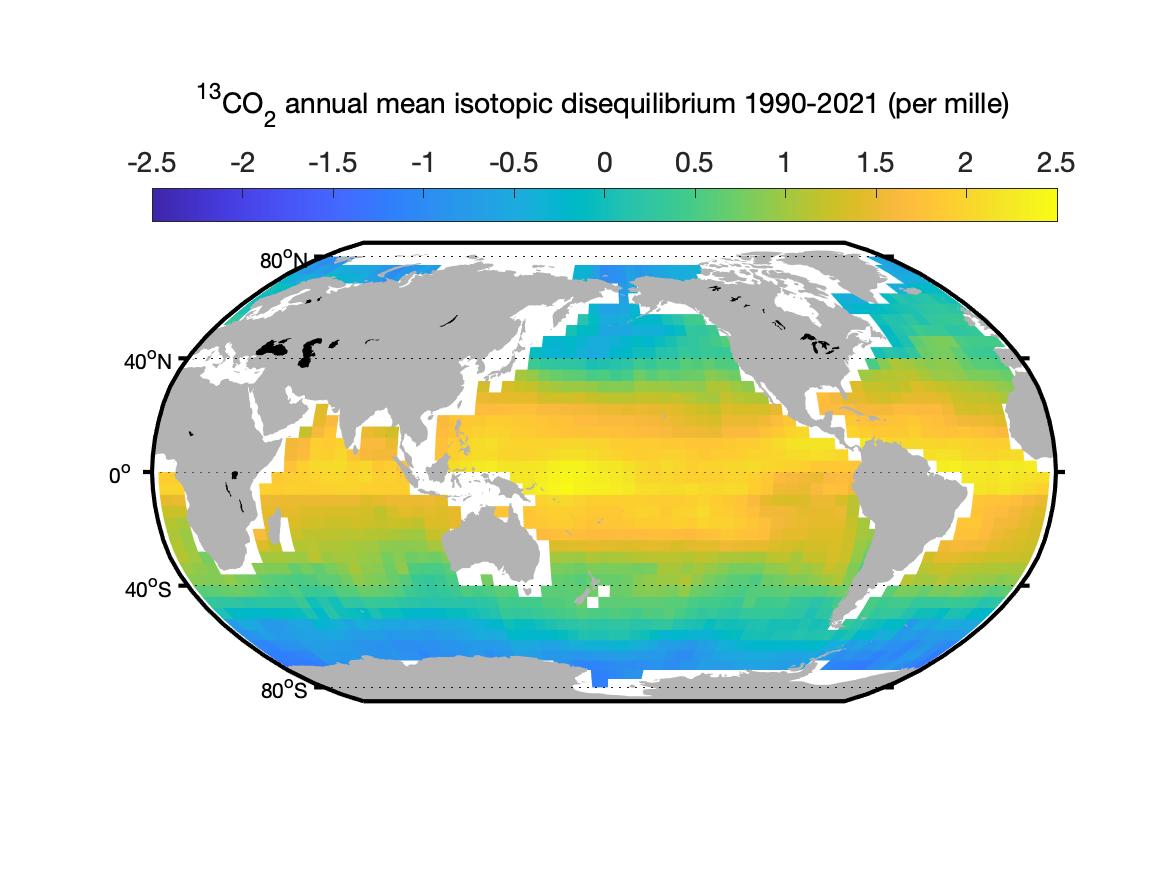Updated Time-varying Maps of Surface Ocean δ13C of DIC and the 13CO2 Isotopic Disequilibrium Flux with Uncertainty
D. Munro1,2, J.B. Miller2, A. Fay3 and P.D. Quay4
1Cooperative Institute for Research in Environmental Sciences (CIRES), University of Colorado, Boulder, CO 80309; 303-497-5765, E-mail: david.munro@noaa.gov
2NOAA Global Monitoring Laboratory (GML), Boulder, CO 80305
3Department of Earth and Environmental Sciences, Columbia University and Lamont Doherty Earth Observatory
4University of Washington, Seattle, WA 98105
Estimates of spatial and temporal patterns in the 13C:12C ratio (expressed as δ13C) of surface ocean dissolved inorganic carbon (DIC) are essential for interpreting atmospheric δ13C of CO2. The work described here is part of a larger project focused on using atmospheric CO2 and δ13C measurements to quantify terrestrial and oceanic net carbon fluxes as well as isotopic fractionation by terrestrial plants. Previously, we compiled a dataset of more than 8700 surface ocean δ13C of DIC measurements collected from research vessels and ships of opportunity from 1978 to 2018. In this analysis, we use a trend analysis over different regions of the global oceans and the approach of Takahashi et al. [2009] to create monthly maps of δ13C of DIC on a 4˚ (latitude) x 5˚ (longitude) spatial grid from 1990 to 2021. These values are then used to calculate the 13C isotopic disequilibrium flux at the same spatial and temporal resolution. The uncertainty of the δ13C of DIC is estimated using cross-validation whereby surface ocean δ13C of DIC observations are withheld and then compared to gridded predictions. We then use the cross-validation statistics to inform a Monte Carlo scheme to estimate the uncertainty of 13C isotopic disequilibrium flux for each grid cell. We use the same Monte Carlo scheme to assess the uncertainty of both the gross and net air-sea CO2 flux from 1990 to 2021 and compare this uncertainty to the spread of estimates based on widely-available surface ocean partial pressure of CO2 (pCO2) products covering the same time interval. We find that uncertainties related to air-sea gas exchange can be substantial relative to the spread among estimates due only to differences in the pCO2 product used in the flux estimate.
Figure 1. Fig. 1. Annual mean 13CO2 isotopic disequilibrium in per mille for 1990-2021.

